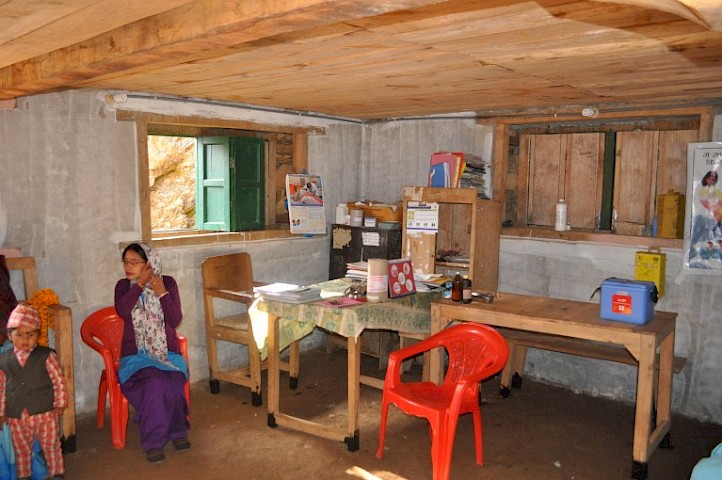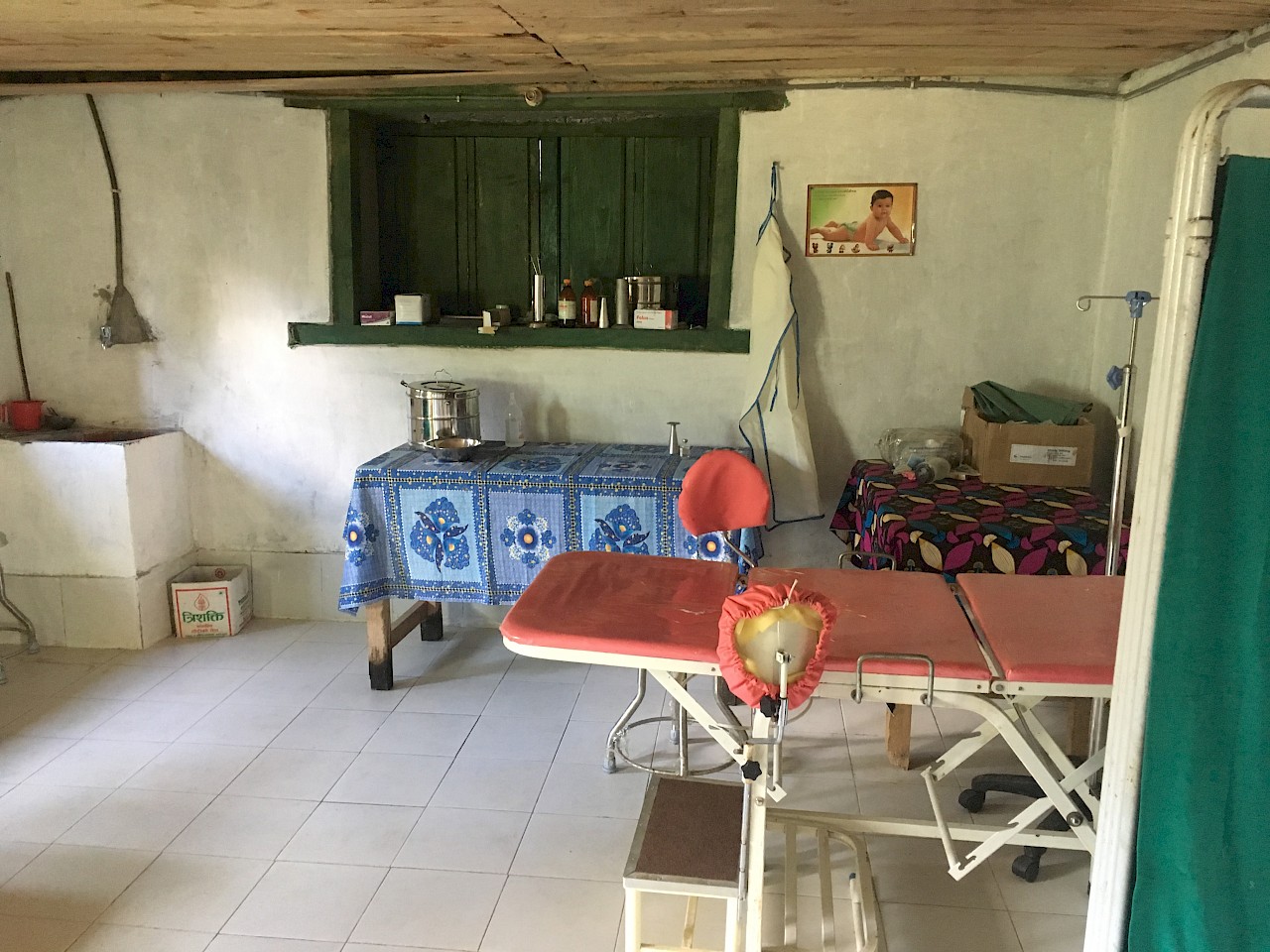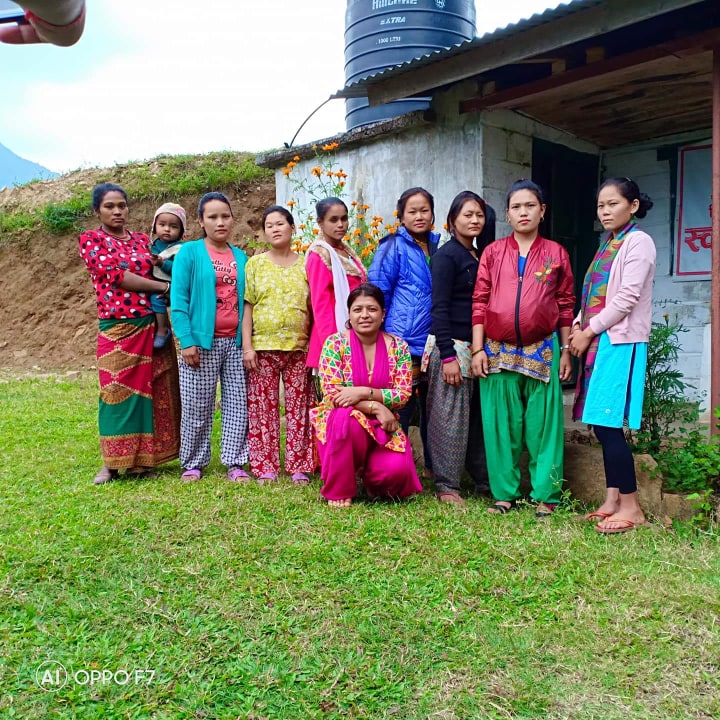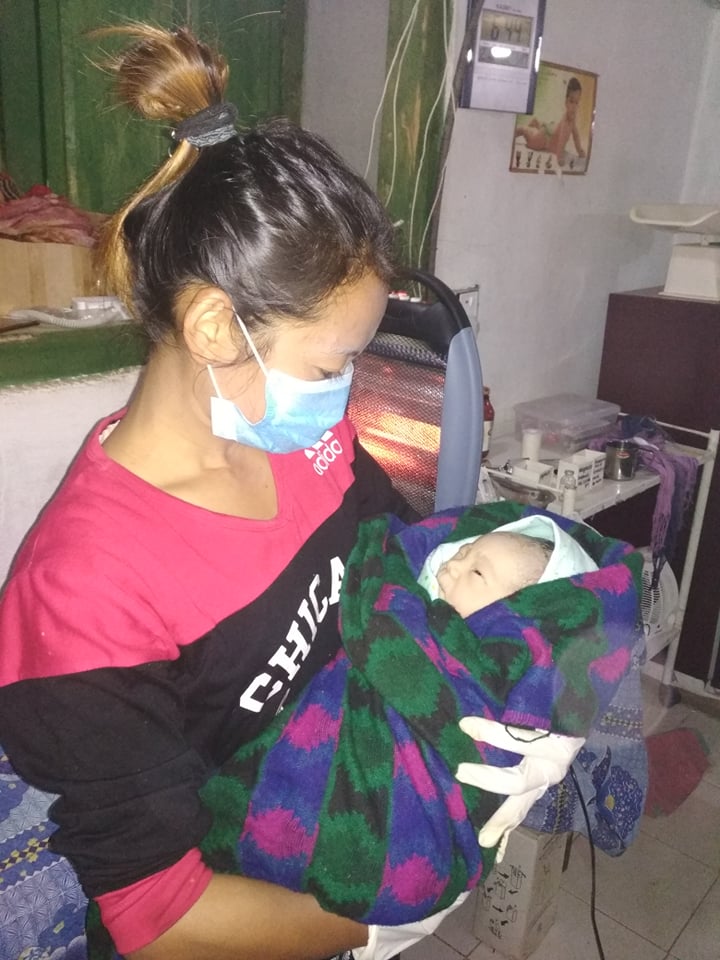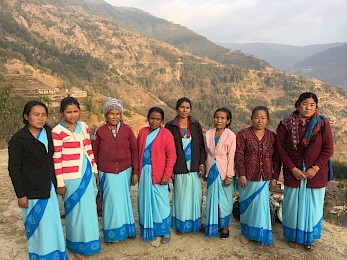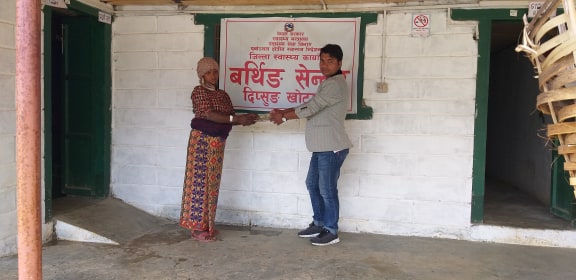Dindu/Dipsung Health Post and Birthing Center
This rural medical clinic was completed by D2N in the fall of 2014. The government of Nepal provides both an auxillary health care worker and nurse midwife. Because the clinic was built “earthquake safe,” it withstood the 2015 earthquake without damage.
Attached to the Health Post, the birthing center consists of two rooms that are tiled, well-equipped and spotless. Historically, women in Khotang’s villages do not seek any prenatal care and their babies are delivered at home, unattended by a healthcare worker. The birthing center was built to enable women to receive four regularly-scheduled prenatal visits and then deliver at the clinic.
Nine female community health volunteers (FCHVs, one per ward) have been trained in the benefits of the birthing center. They circulate in their wards meeting with young women discussing the advantages of the birthing center and addressing any reservations they might have about using the center. To encourage mothers to deliver at the birthing center the government pays women NP 1400 if they go to the four regularly-scheduled prenatal visits, deliver at the clinic and stay one night in the clinic. The government further incentivises the HPBC to promote use of the birthing centers by paying NP 2500 rupees for every woman that uses the program in its entirety.
Since its completion in 2017 countless babies have been delivered in the birthing centers. Expectant mothers participate in the four antenatal visits required by protocol. These interfaces create a trust between the staff at the birthing center and the mothers, making it more likely that the mothers will bring their babies back to the health post for well-baby visits and then continue to bring them as the children grow up.
Thanks to Jarka Shrestha, an auxillary nurse midwife and skilled birthing attendant, the use of ultrasound has been a new intervention for evaluating pregnant women. She underwent ultrasound training and has been circulating to the six villages in the municipality every month to screen pregnant women. Since she has begun this practice, pre-screening has detected a woman with twins and two women with breech position. All three women were referred out to a district hospital and an urban facility in a timely fashion for successful outcomes.
